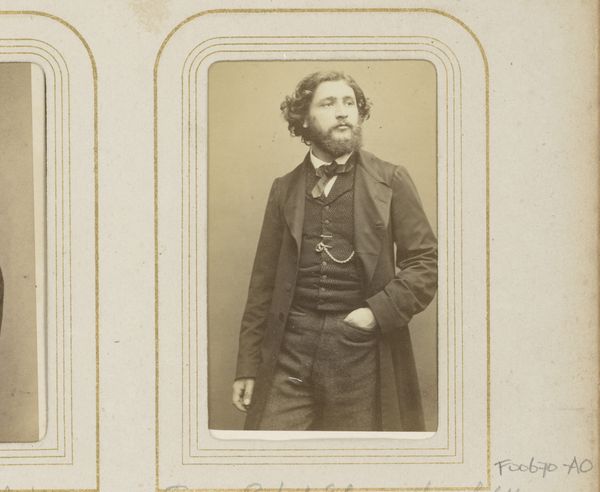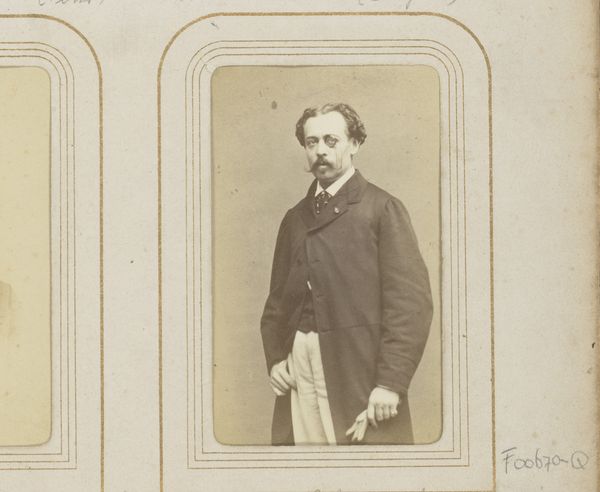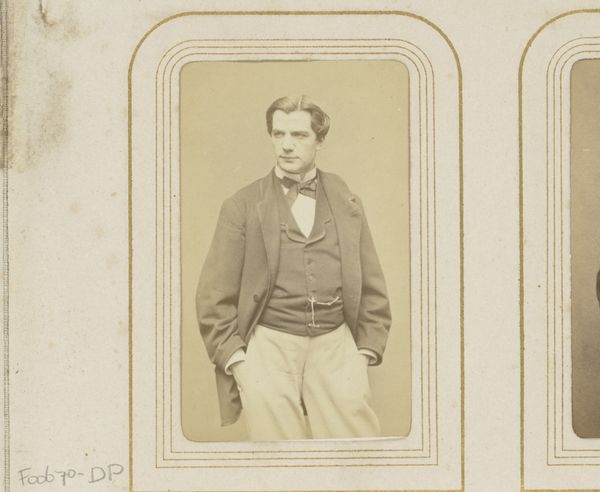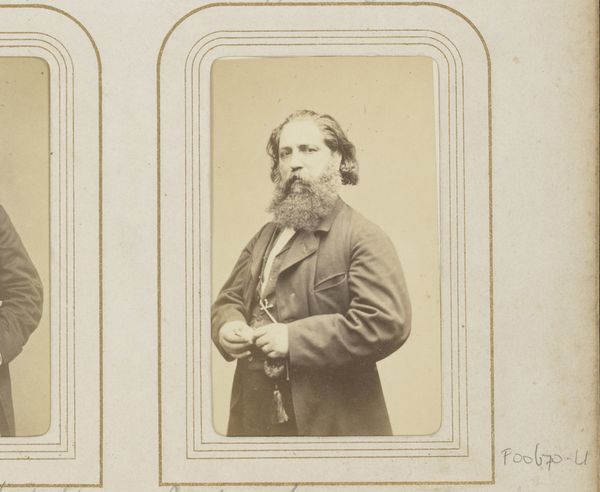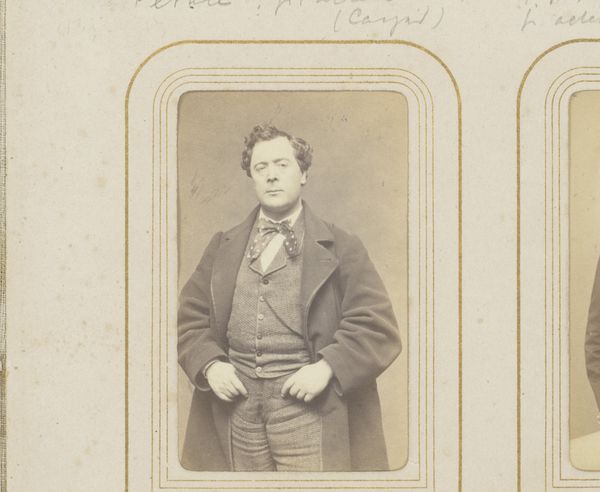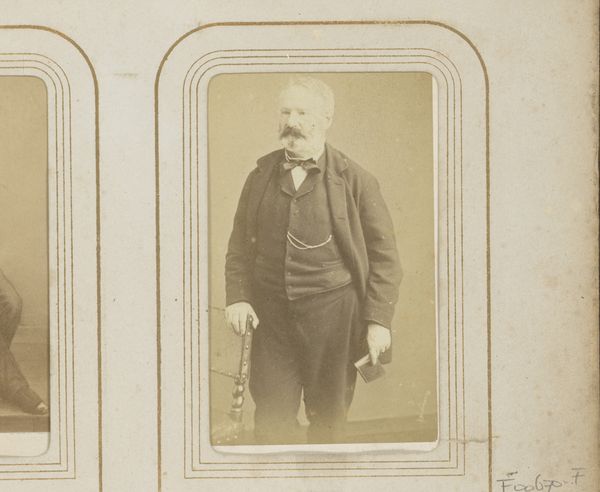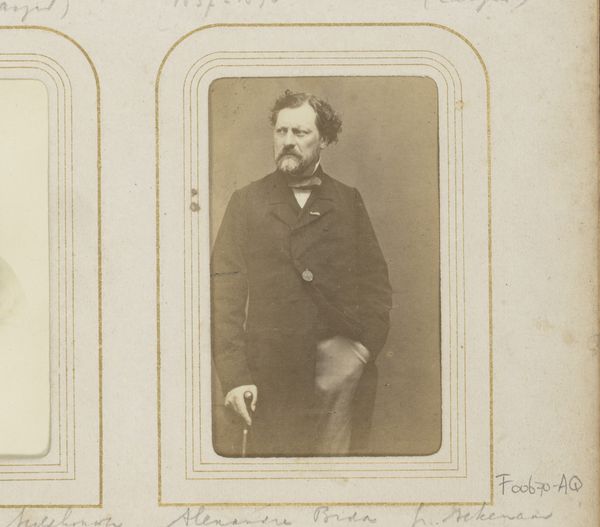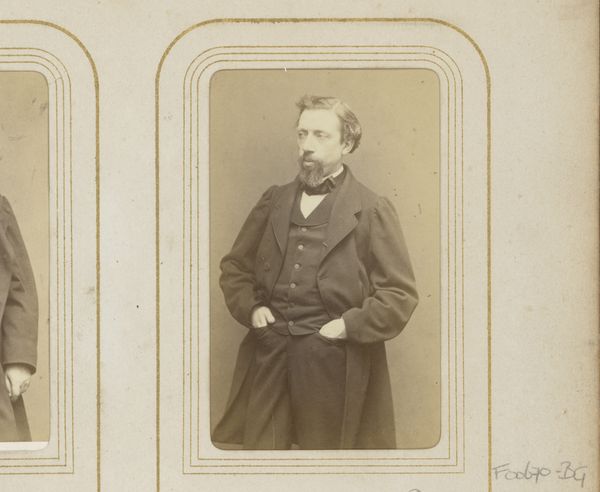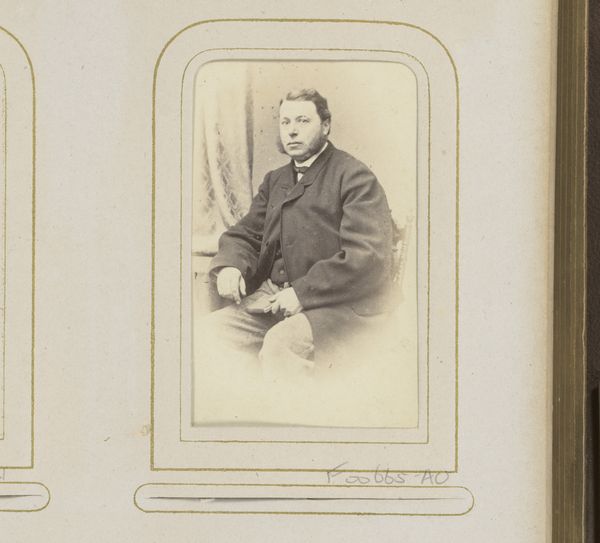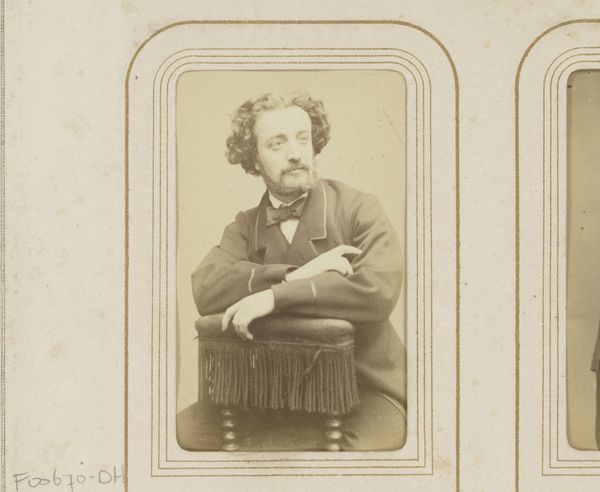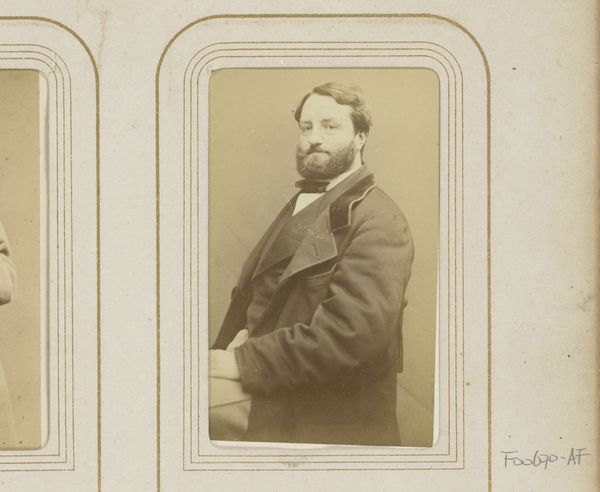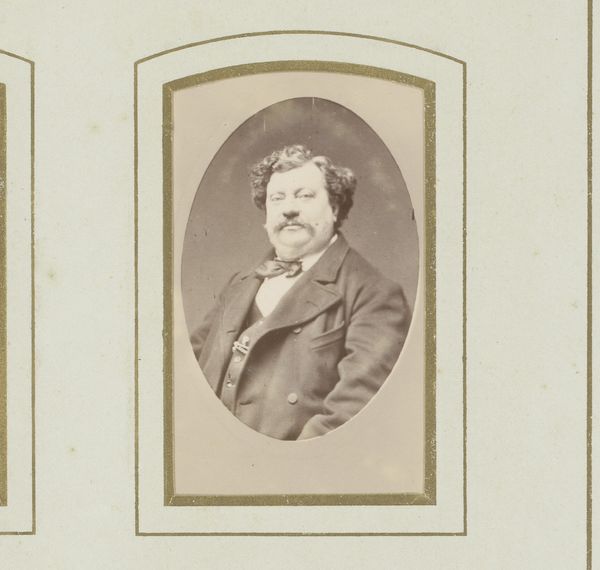
daguerreotype, photography
#
portrait
#
daguerreotype
#
photography
#
historical photography
#
19th century
#
realism
Dimensions: height 84 mm, width 51 mm
Copyright: Rijks Museum: Open Domain
Editor: Here we have Georges Mathurin Legé’s portrait of Édouard Brindeau from 1867, captured through the fascinating process of daguerreotype photography. There's something so inherently melancholic and intriguing about these early photographs. What catches your eye when you look at this piece? Curator: Melancholy is the perfect word! It's in the stillness, the solemnity… Perhaps it's the knowledge that sitting for a daguerreotype was quite an event. You had to remain absolutely motionless for several minutes, which imprinted a certain gravity onto the subject, don't you think? It’s interesting to ponder what Édouard Brindeau might have been thinking. A serious pose and countenance seemed de rigueur, no smiles! Editor: Definitely, there’s a constructed feeling about the whole thing, an intentional mood. The way he's standing, with his hand in his pocket… Is he trying to project a certain image of himself? Curator: Absolutely! And isn't that the core of portraiture? An aspiration, an idealized self? His posture, that little waistcoat chain… Legé, the photographer, has helped create a story, one of a respectable, perhaps even prosperous, citizen. Early photography, even with its limitations, wasn't simply about documentation; it was about crafting identity. And isn't it charming, that the very process demanded a quietude that mirrored the sitter’s attempt at careful self-presentation? It's like they were both holding their breath for posterity. Editor: That’s a beautiful way to put it, “holding their breath for posterity.” It makes me look at it with completely new eyes! Thanks so much for sharing your insights! Curator: My pleasure! These glimpses into the past always leave me pondering what other stories remain hidden in plain sight.
Comments
No comments
Be the first to comment and join the conversation on the ultimate creative platform.
